Most viewed
- Page Path
-
- HOME
- BROWSE ARTICLES
- Most viewed
"Most viewed" Articles are from the articles published in 2023 during the last six month.
- Original Article
- Neonatology (Perinatology)
- Oral administration of bone marrow-derived mesenchymal stem cells attenuates intestinal injury in necrotizing enterocolitis (3,154 times)
- Yeong Seok Lee, Yong Hoon Jun, Juyoung Lee
- Clin Exp Pediatr. 2024;67(3):152-160. Published online February 19, 2024
-
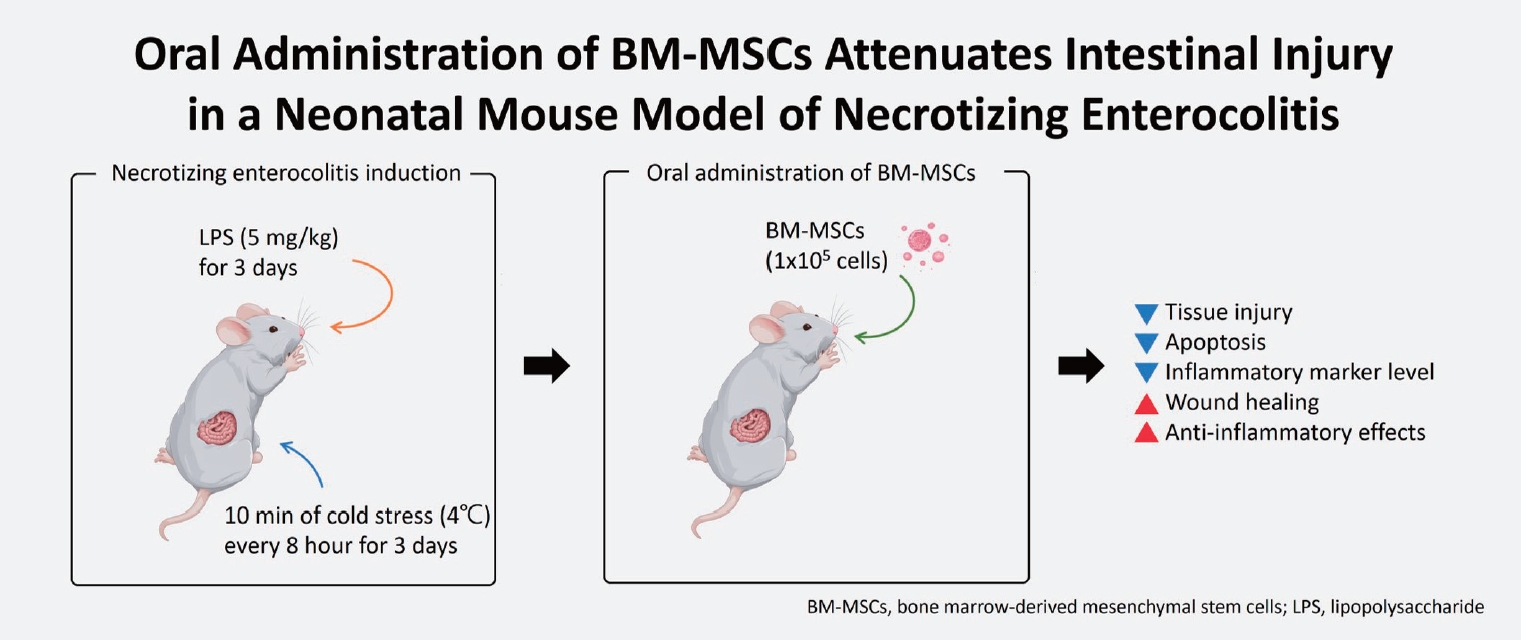
Question: What is the optimal dose of bone marrow-derived mesenchymal stem cells (BM-MSCs) for treating necrotizing enterocolitis (NEC), and is orally administered BM-MSC effective?
Findings: High (1×106 cells) or multiple BM-MSC doses showed similar effects as low (1×105 cells) doses of intraperitoneally administered BM-MSCs. Furthermore, orally administered BM-MSCs were as effective as intraperitoneally administered BM-MSCs.
Meaning: Orally administered low-dose BM-MSCs are a potential treatment for NEC.
- Neurology
- Need for palliative care from birth to infancy in pediatric patients with neurological diseases (3,146 times)
- Raffaele Falsaperla, Silvia Marino, Carla Moscheo, Lucia Giovanna Tardino, Simona Domenica Marino, Concetta Sciuto, Piero Pavone, Giovanna Vitaliti, Federica Sullo, Martino Ruggieri
- Clin Exp Pediatr. 2023;66(8):350-356. Published online June 14, 2023
-

Question: What are the current palliative care protocols, palliative course, and implementable palliative care programs for hospitalized pediatric patients with neurological diseases in Italy?
Finding: We studied 34 newborns with nervous system diseases, all of whom had a poor prognosis.
Meaning: Despite current legislation in Italy, no palliative care network has been implemented. Given the vast number of patients with neurological conditions, standardized palliative care guidelines and protocols are required.
- Cardiology
- Comparative analysis of adolescent hypertension definitions for predicting early adulthood carotid artery intima-media thickness: Tehran lipid and glucose study (3,126 times)
- Maryam Barzin, Shirin Yaghoobpoor, Maryam Mahdavi, Behnaz Abiri, Majid Valizadeh, Fereidoun Azizi, Pooneh Dehghan, Farhad Hosseinpanah
- Clin Exp Pediatr. 2024;67(12):694-703. Published online September 12, 2024
-

Question: What is the prevalence of HTN among adolescents enrolled in the TLGS according to 3 different accepted definitions (4th report, ESH, and AAP-CPG). Also, what is the ability of each of these definitions in predicting early adulthood CIMT, as a surrogate for cardiovascular disease events?
Finding: The highest and lowest prevalence of stage 1 HTN was observed with the AAP-CPG (17.7%) and ESH (8.8%), respectively. Similarly, the highest and lowest prevalence of stage 2 HTN was noted with the AAP-CPG (1.5%) and ESH (0.8%), respectively. The highest to lowest predictive abilities belonged to the 4th report, ESH, and AAP-CPG, respectively.
Meaning: Among the various definitions of pediatric HTN, the 4th report offered the best ability to predict a high CIMT during early adulthood, followed by the ESH and AAP-CPG.
- Clinical Note
- Rheumatology
- Haploinsufficiency A20 misdiagnosed as PFAPA (periodic fever, aphthous stomatitis, pharyngitis, and cervical adenitis) syndrome with Kikuchi disease (3,107 times)
- Kyo Jin Jo, Su Eun Park, Chong Kun Cheon, Seung Hwan Oh, Seong Heon Kim
- Clin Exp Pediatr. 2023;66(2):82-84. Published online June 22, 2022
-

- Letter to the Editor
- Allergy
- Increased serum eosinophilic cationic protein in children with nonspecific chronic cough (3,107 times)
- Young Hwan Kim, Yoon Young Jang, Jieun Jeong, Hai Lee Chung
- Clin Exp Pediatr. 2023;66(10):455-457. Published online September 14, 2023
-
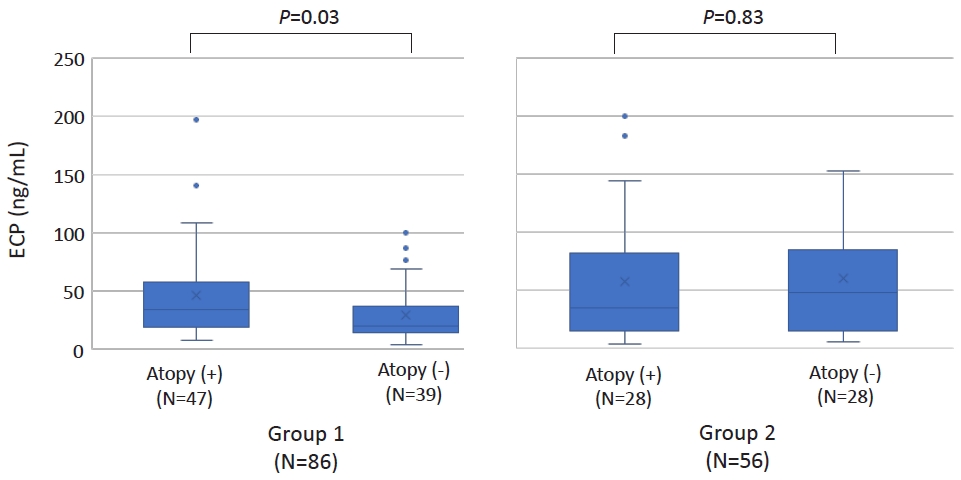
- Review Article
- Other
- Children’s health affected by parent’s behavioral characteristics: a review (3,103 times)
- Sung Eun Kim, Jongin Lee
- Clin Exp Pediatr. 2024;67(5):232-239. Published online August 21, 2023
-

· Parents’ occupational hazards, long working hours, and smoking behaviors should be modified adequately to minimize adverse health effects on their children.
· As of 2023, several diseases from fetal exposure to occupational hazards can be compensated with Industrial Accident Compensation Insurance in South Korea.
· A directed acyclic graph is recommended for medical research to control the effects of parents’ behaviors on children’s health.
- Original Article
- Infection
- Construction and validation of predictive models for intravenous immunoglobulin–resistant Kawasaki disease using an interpretable machine learning approach (3,094 times)
- Linfan Deng, Jian Zhao, Ting Wang, Bin Liu, Jun Jiang, Peng Jia, Dong Liu, Gang Li
- Clin Exp Pediatr. 2024;67(8):405-414. Published online July 23, 2024
-

Question: Is there a reliable model to predict intravenous immunoglobulin (IVIG)-resistant Kawasaki disease (KD)?
Finding: We constructed 5 machine learning models to predict IVIG-resistant KD. Extreme gradient boosting (XGBoost) model was superior to logistic, support vector machine, light gradient boosting machine and multiple layers perception models. The SHAP (SHapley Additive exPlanations) value interpreted the contribution of each feature in XGBoost model.
Meaning: XGBoost model showed the excellent performance to predict IVIG-resistant KD with explainable and visualizable machine learning algorithm.
- Editorial
- Endocrinology
- Nonalcoholic fatty liver disease in children and adolescents (3,083 times)
- Hae Sang Lee
- Clin Exp Pediatr. 2024;67(2):90-91. Published online January 24, 2024
-
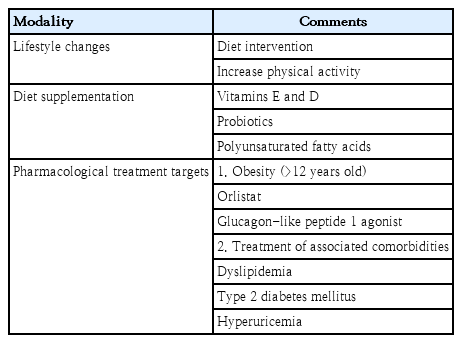
· With the increase in childhood obesity, nonalcoholic fatty liver disease (NAFLD) has become a concern in recent years.
· NAFLD is strongly associated with insulin resistance.
· Lifestyle modifications are the mainstay treatment for NAFLD.
- Letter to the Editor
- Pulmonology
- Metabolic syndrome and pulmonary dysfunction in asthmatic children during the COVID-19 pandemic (3,062 times)
- Jue Seong Lee, Sang Hyun Park, Yoon Lee, Seunghyun Kim, Wonsuck Yoon, Young Yoo
- Clin Exp Pediatr. 2024;67(3):168-170. Published online February 19, 2024
-
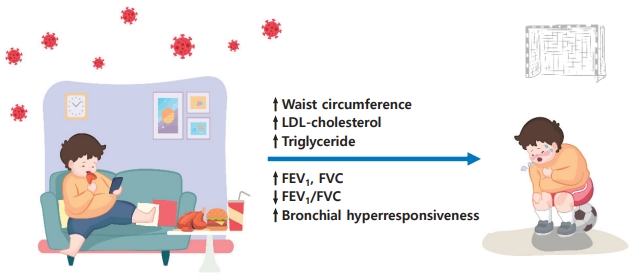
- Review Article
- Nutrition
- Macronutrients modified dietary intervention in the management of overweight/obese children and adolescents: a systematic review (3,050 times)
- Jihyun Park, Oh Yoen Kim
- Clin Exp Pediatr. 2024;67(4):191-200. Published online July 11, 2023
-
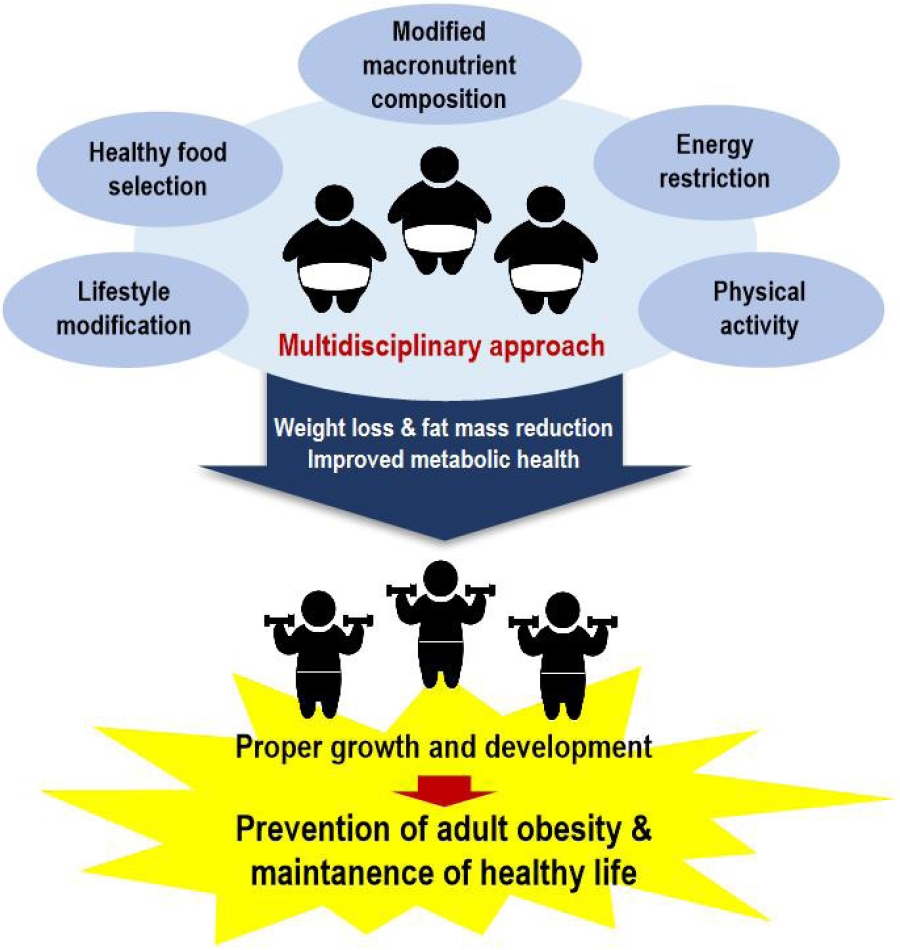
· Dietary macronutrient modifications affect the body composition of and metabolic markers in children and adolescents.
· Hypocaloric diets, regardless of macronutrient composition, are reportedly effective for weight loss in obese children.
· Future interventional studies with meta-analyses that include Korean children and adolescents are needed to provide basic information applicable to this population.
- Original Article
- Genetics and Metabolism
- Interleukin (IL)-1B and IL-1 receptor antagonist gene polymorphisms in children with primary immune thrombocytopenia (3,033 times)
- Seham Mohamed Ragab, Wafaa Moustafa Abo ElFotoh, Mahmoud Ahmed El-Hawy, Eman Abdelfatah Badr, Saara Khairat Ali Mostafa, Mai El-Sayad Abd El-Hamid
- Clin Exp Pediatr. 2024;67(9):465-473. Published online July 24, 2024
-

· Polymorphisms in interleukin (IL)-1B and IL-1 receptor (IL-1R) antagonists may significantly affect the pathogenesis of immune thrombocytopenia (ITP).
· IL-1B and IL-1R antagonist gene polymorphisms are correlated with severity and susceptibility to primary ITP in children.
- Letter to the Editor
- Neonatology (Perinatology)
- Association between feeding intolerance and intestinal dysbiosis in very premature infants (3,014 times)
- Putri Maharani Tristanita Marsubrin, Agus Firmansyah, Rinawati Rohsiswatmo, Zakiudin Munasir, Saptawati Bardosono, Safarina G. Malik, Yuditiya Purwosunu, Ina S. Timan, Tetty Yuniati, Maya Yulindhini
- Clin Exp Pediatr. 2023;66(11):501-503. Published online October 24, 2023
-

- Editorial
- Neurobehavior
- Importance of pediatrician’s role in preventing positional plagiocephaly (3,005 times)
- Hee-Jeong Kang
- Clin Exp Pediatr. 2024;67(6):294-295. Published online May 21, 2024
-

· Plagiocephaly is characterized by the asymmetrical shape of a baby’s head.
· Since positional plagiocephaly is associated with developmental delay and further musculoskeletal problems, early detection allows for timely intervention and prevents worsening of the condition.
· Pediatricians can educate parents about proper head positioning and encourage supervised tummy time during awake hours.
- Review Article
- Cardiology
- Environmental changes surrounding congenital heart disease (2,997 times)
- Eun-Young Choi
- Clin Exp Pediatr. 2023;66(8):332-338. Published online January 2, 2023
-
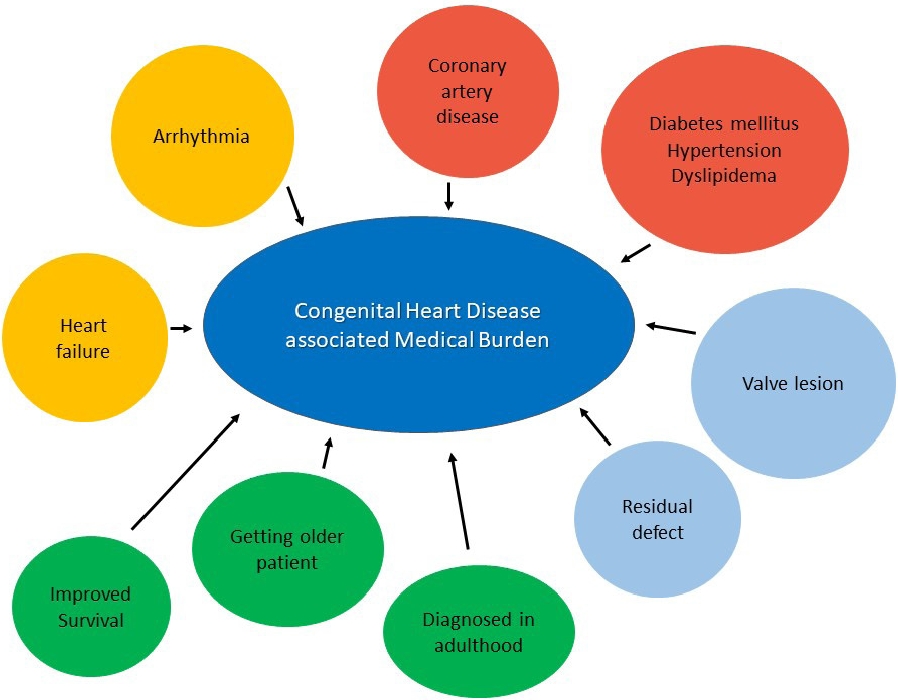
· As the number of patients with congenital heart disease increases, the medical burden increases.
· Various fusion imaging techniques using percutaneous procedures have been introduced.
· With advances in technology, convenient ambulatory devices have been introduced.
· A well-organized team approach is required to resolve advanced heart failure in patients with congenital heart disease.
- Clinical Note
- Gastroenterology
- Congenital antral web: rare cause of gastric outlet obstruction successfully managed with endoscopic balloon dilatation (2,992 times)
- Upasana Ghosh, Ujjal Poddar, Srinivas Srinidhi Vadlapudi, Moinak Sen Sarma, Anshu Srivastava
- Clin Exp Pediatr. 2025;68(3):266-268. Published online January 13, 2025
-

- Genetics and Metabolism
- Biallelic POLR3A variants cause Wiedemann-Rautenstrauch syndrome with atypical brain involvement (2,967 times)
- Byungseung Moon, Minhye Kim, Hye Jin Kim, Jae So Cho, Hey Joon Son, Byung Chan Lim, Ki Joong Kim, Jong Hee Chae, Soo Yeon Kim
- Clin Exp Pediatr. 2023;66(3):142-144. Published online December 30, 2022
-

- Original Article
- Neurology
- Changes in frequency of benign convulsions with mild gastroenteritis and their viral causes before and during the COVID-19 pandemic: a single-center study (2,931 times)
- Hyejin Na, Sanghoon Lee, Seo Hee Kim, Young Ok Kim
- Clin Exp Pediatr. 2024;67(4):213-220. Published online March 19, 2024
-

Question: Did coronavirus disease 2019 (COVID-19) affect the frequency, seasonal variation, or virus type of benign convulsions with mild gastroenteritis (CwG)?
Findings: We compared 41 cases of CwG before and during the COVID-19 pandemic. After March 2020, frequency did not change significantly (18 patients vs. 23 patients), seasonal variation was lost, and number of cases of enteric adenovirus-associated CwG increased (1 cases vs. 7 cases).
Meaning: The COVID-19 pandemic affected CwG.
- Editorial
- Cardiology
- What we should know about pediatric heart failure: children are not small adults (2,931 times)
- Ja-Kyoung Yoon
- Clin Exp Pediatr. 2025;68(1):62-64. Published online November 6, 2024
-
· Pediatric heart failure (PHF) features high morbidity and mortality rates.
· Although adults and children can share a common diagnosis of heart failure, the underlying causes can differ significantly and require distinct therapeutic approaches.
· Treatments designed for adults are often applied to PHF despite the fundamental physiological and developmental differences between them.
· Child-specific data are vital for the development of tailored treatments to meet the unique needs of patients with PHF.
- Letter to the Editor
- Gastroenterology
- Pediatric abdominal ultrasound training program for pediatricians (2,928 times)
- Soon Chul Kim
- Clin Exp Pediatr. 2024;67(9):474-476. Published online August 20, 2024
-

- Editorial
- Neonatology (Perinatology)
- Exploring the role of laryngeal masks in neonatal resuscitation (2,922 times)
- Euiseok Jung
- Clin Exp Pediatr. 2024;67(5):247-248. Published online December 28, 2023
-
· Laryngeal masks (LMs) offer stable airway access and skill retention advantages, making them promising alternatives to positive-pressure ventilation in neonatal care.
· The ease of teaching LM insertion techniques to less experienced providers addresses the need for swift intervention and skill retention.
· Careful consideration of the benefits and challenges of LMs is essential in determining their effective integration into enhanced neonatal resuscitation protocols.
- Original Article
- Hematology
- Changes and correlations of T-cell coinhibitory molecule programmed death-1 and interferon-γ in pediatric immune thrombocytopenia (2,913 times)
- Fady Mohamed El-Gendy, Amira M.F. Shehata, Esam Awad Abd El-Kawy, Mahmoud Ahmed El-Hawy
- Clin Exp Pediatr. 2023;66(3):127-133. Published online February 24, 2023
-
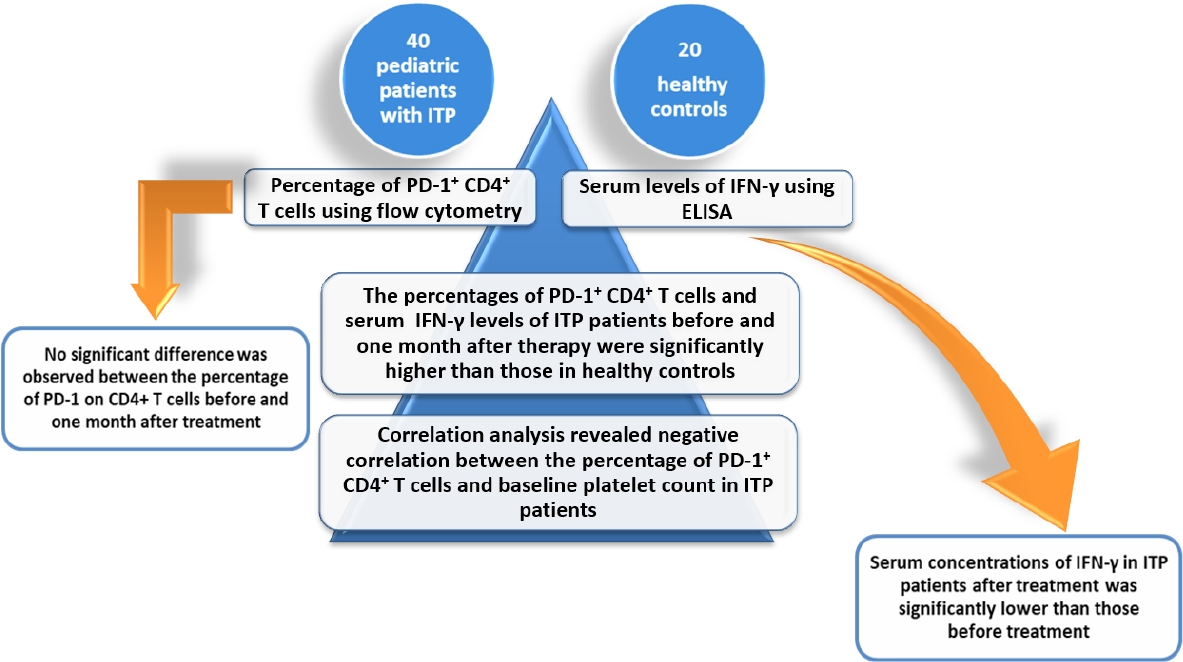
Question: What are the PD-1+ CD4+ T cells percentages and serum interferon gamma (IFN-γ) levels of pediatric patients with immune thrombocytopenia (ITP)?
Finding: Compared with healthy controls, the PD-1+ CD4+ T cells percentages and IFN-γ levels were significantly higher in ITP patients before and 1 month after therapy.
Meaning: Our findings suggest that PD-1+ CD4+ T cells and IFN-γ are involved in the pathophysiological process of ITP.
- Editorial
- Neurology
- Lumbar puncture or not: when does febrile seizure require a neurodiagnostic evaluation? (2,883 times)
- Seung Soo Kim
- Clin Exp Pediatr. 2023;66(2):68-69. Published online December 9, 2022
-
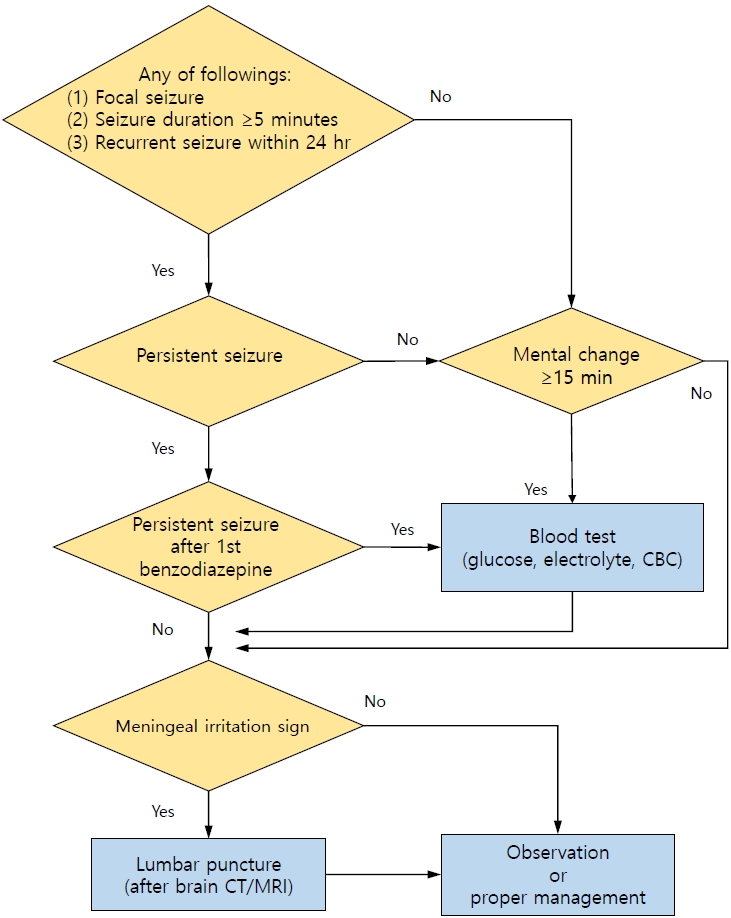
· A neurodiagnostic evaluation (lumbar puncture, blood tests, electroencephalography, and neuroimaging) is not indicated in most patients with simple febrile seizures.
· A lumbar puncture is indicated when a central nervous system infection is suspected in any patient with febrile seizures.
· Blood tests (glucose, electrolytes, and complete blood count) are indicated in patients with persistent seizure after benzodiazepine treatment, prolonged loss of consciousness, poor general condition, or signs of dehydration.
- Genetics and Metabolism
- Advancing orphan drug development for rare diseases (2,867 times)
- Jung Min Ko
- Clin Exp Pediatr. 2024;67(7):356-357. Published online November 17, 2023
-
· Rare diseases present unique challenges and unmet needs for which the development of orphan drugs tailored to them offers hope.
· Despite the hurdles posed by limited patient populations, orphan drug designations from regulatory agencies provide incentives, such as extended market exclusivity and tax credits, that ignite transformative advances.
· Scientific progress in genomics, personalized medicine, and analytics empowers precise interventions by decoding genetic anomalies and encouraging effective treatments.
- Original Article
- Infection
- Seroprevalence of maternal peripartum human T-cell lymphotropic virus type-1 infection: a systematic review and meta-analysis of the Nigerian literature (2,849 times)
- Abdulrasheed Usman, Muhammad Hamis Musa, Bukhari Isah Shuaib, Olayemi Balogun, Mukhtar Adeiza
- Clin Exp Pediatr. 2023;66(7):307-316. Published online December 22, 2022
-
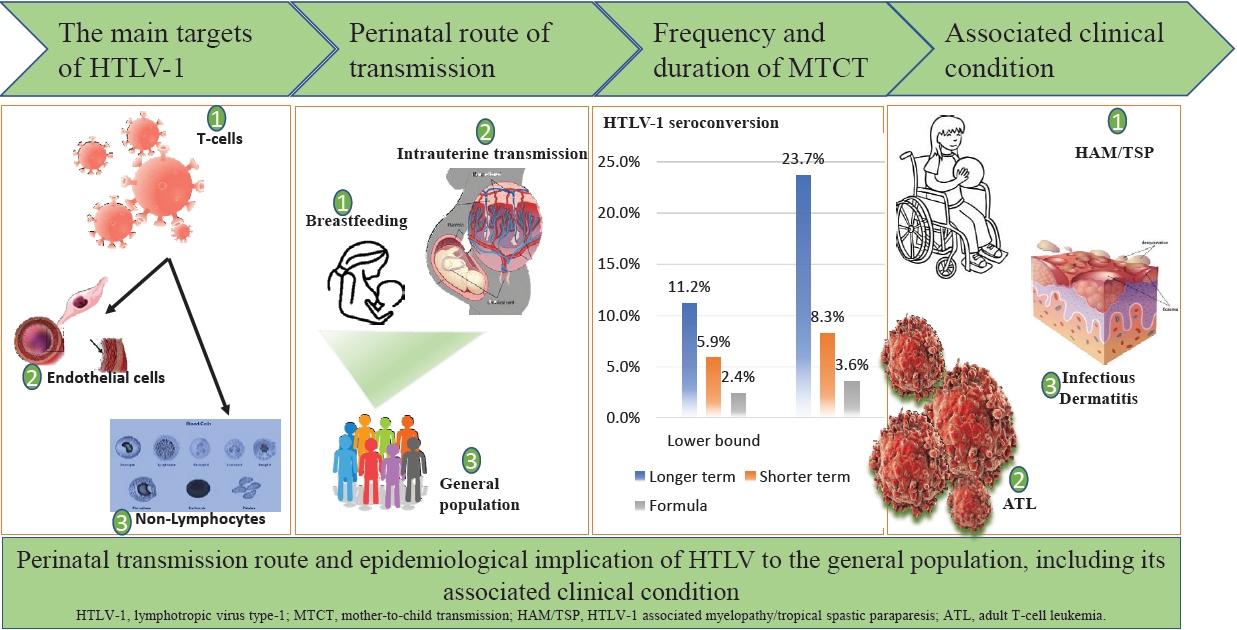
The peripartum period is an important transmission time for human T-cell lymphotropic virus-1 (HTLV-1) infection, mainly via breastfeeding and partly through the placental tissues of carrier mothers. Although most HTLV-1–infected individuals are asymptomatic, fetal and childhood infections often result in several diseases with disappointing treatment outcomes. An estimated HTLV-1 burden in Nigeria among perinatal women must be determined to enable rational planning of a comprehensive health care intervention.
- Letter to the Editor
- Developmental and Behavioral Medicine
- Effect of rolling over pattern and caregiver perception on plagiocephaly in Korean infants (2,821 times)
- Jin A Yoon, Soo-Yeon Kim, Yong Beom Shin
- Clin Exp Pediatr. 2023;66(6):272-273. Published online May 24, 2023
-
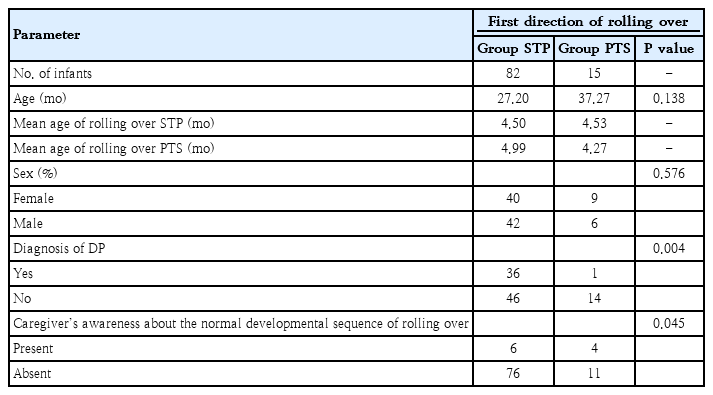
- Editorial
- Allergy
- Advancements in food allergen immunotherapy: improving quality of life and reducing risks (2,821 times)
- Jihyun Kim
- Clin Exp Pediatr. 2024;67(12):672-674. Published online July 31, 2024
-

· Pediatric food allergies considerably impair patient and family quality of life, particularly those with persistent allergies to common food allergens.
· Recent research has focused on developing diverse approaches to food allergen immunotherapy, showing promising outcomes of oral, sublingual, and epicutaneous immuno therapies.
· Critical considerations in immunotherapy candidate selection underscore the need for personalized approaches and reliable biomarkers in future studies to improve treatment outcomes.
- Original Article
- Developmental and Behavioral Medicine
- Attention-deficit/hyperactive-impulsive disorder symptoms among grade 1 students with reading disorder in Thailand (2,813 times)
- Patcharapun Sarisuta, Issarapa Chunsuwan, Tippawan Hansakunachai, Paskorn Sritipsukho
- Clin Exp Pediatr. 2023;66(11):485-492. Published online October 24, 2023
-

Question: Would students with reading disorder have a significantly higher prevalence of attention-deficit/hyperactiveimpulsive disorder (ADHD) symptoms than neurotypical students?
Finding: Students at risk of reading disorder exhibited significant ADHD symptoms compared with those not at risk of reading disorder according to all presentations of teacher assessments versus only for predominantly inattentive presentations of the parental assessments.
Meaning: Students with reading disorder have a significantly higher prevalence of ADHD symptoms than neurotypical students. Sex, parental education level, average family income, and children’s school affiliation significantly influenced reading disorder prevalence.
- Editorial
- General Pediatrics
- Global breastfeeding efforts: a long way to go (2,804 times)
- Hye-Jung Shin
- Clin Exp Pediatr. 2025;68(4):300-302. Published online November 13, 2024
-

· Despite much effort, breastfeeding practices remain unsatisfactory worldwide.
· Effective breastfeeding-promoting interventions are needed that are appropriate for age, culture, and social environment.
· Interventions can promote breastfeeding, especially in younger populations such as adolescent mothers.
- Pulmonology
- Wheezing in infants and preschoolers: phenotypes and treatment options (2,803 times)
- Jung Yeon Shim
- Clin Exp Pediatr. 2023;66(1):26-27. Published online December 6, 2022
-
· Knowing who will develop into asthma or who will not is important to impose proper treatment and early intervention in a child with the first episode of wheezing.
· Phenotypes of severe bronchiolitis in less than 2-year-old children with first episode of wheezing were suggested for different treatment options
· RV-induced and/or atopy-associated severe wheezing in preschool children may benefit from early intervention of asthma treatment.
- Allergy
- Trends in food allergen immunotherapy in Korea after changed national regulations (2,785 times)
- Tae Won Song
- Clin Exp Pediatr. 2024;67(4):201-202. Published online November 21, 2023
-
National regulations, academic guidelines, and clinical trends in food allergen immunotherapies (FA-AIT) differ among countries and have changed rapidly. Current officially approved FA-AIT are oral immunotherapy (OIT) using heated milk/egg in Korea and peanut OIT using standardized products in the United States and Europe. FA-AIT should be administered by specialist physicians with experience administering oral food challenge tests and managing severe allergic reactions inside and outside research settings.
-

-
-
6.02024CiteScore98th percentilePowered by
-
Impact Factor3.6
-
- TOPICS
- ARTICLE CATEGORY
- Editorial Office
-
Korean Pediatric Society
#1606 Seocho World Officetel, 19 Seoun-ro, Seocho-ku, Seoul 06732, Korea
Tel: +82-2-3473-7306 Fax: +82-2-3473-7307 E-mail: office@e-cep.org
Clinical and Experimental Pediatrics is an open access journal. All articles are distributed under the terms of the Creative Commons Attribution NonCommercial License (http://creativecommons.org/licenses/by-nc/4.0/)
Copyright © 2025 by Korean Pediatric Society.











